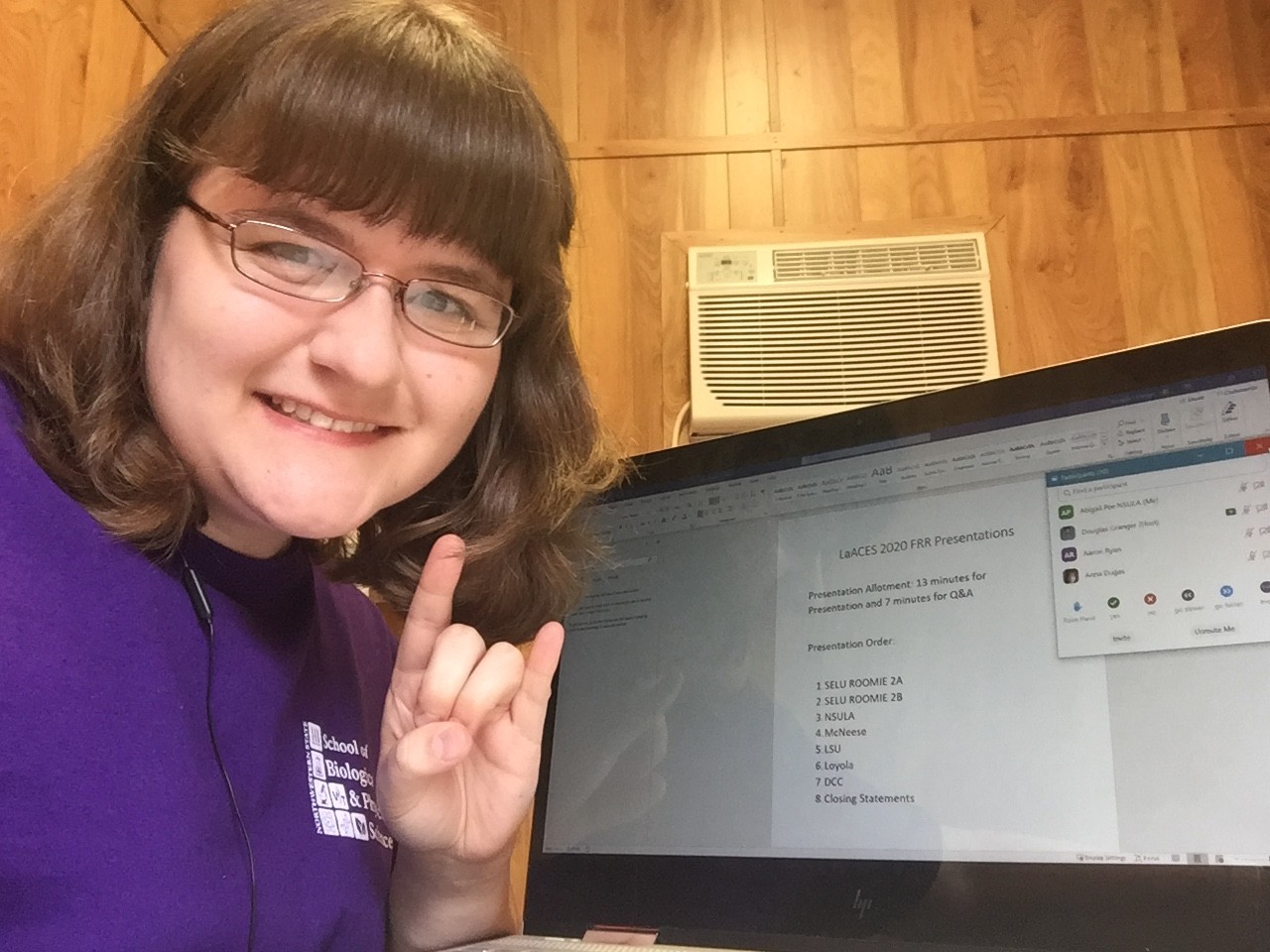NATCHITOCHES – A team of students from Northwestern State University and the Louisiana School for Math, Science and the Arts successfully defended their LaACES DemonSats-1 payload before LaSPACE and NASA officials, earning permission to launch their payload into space via sounding balloon.
NSU’s LaACES (Louisiana Aerospace Catalysts Experiences for Students) team includes Abigail Poe of Natchitoches, a May 2020 biology graduate; Holden Rivers of Zwolle, a May 2020 industrial engineering technology graduate; Harley Godwin of Goldonna, a May 2020 electrical engineering technology graduate; Jesse Coats of Harvey, physical sciences; Savon Gipson of Shreveport, industrial engineering technology, Carlee Lake of Pineville, biology, and LSMSA students Charles Beam and Kyle McCleary, a May 2020 graduate.
LaSPACE is a consortium in the NASA National Space Grant and Fellowship Program network that is designed to network college, university and state education boards with partners in business, industry and the non-profit sector to develop aerospace science, research, technology, education and awareness.
The LaACES student ballooning program was developed to train a new generation of scientists and engineers for the aerospace industry and the general STEM workforce. LaSPACE students are exposed to aerospace project development from the design, fabrication, testing and operation of small payloads launched on a latex sounding balloon vehicle that will carry the experiments to the edge of space, an altitude of 32-35 kilometers.
“Despite having campus shut down in March, this team worked with me to finish the payload and its testing, along with the 84-page Flight Readiness Review (FRR) report the team needed to share with the LaSPACE officials before the defense,” said Anna Dugas, assistant professor of physics and LaSPACE campus coordinator. “I am so proud of this team for sticking with this project through the pandemic and past the semester, especially the recently graduated members.”
The launch, originally scheduled for early July, was delayed due to weather and will be launched in late July or August.
LaACES is open to NSU students who are enrolled in Physics 3400 and/or Physics 3900, as well as other STEM students and students interested in STEM project management and technical writing with instructor permission. The group’s focus is learning how to complete a project affiliated with NASA. The project involves payload design, building and testing, as well as extensive documentation including preliminary design (PDR), critical design (CDR) and flight readiness review (FRR) reports.
“As you can imagine, a successful group must be compromised of members with different skills: electronic prototyping, microcontroller programming, technical writing, data analysis/statistics, oral presenting, and project management,” Dugas said.
“Coming into this project, I did not have much experience with electronics and programming, but Professor Dugas helped us learn about these topics,” Poe said. “This project was very much hands-on as team members were involved in every aspect of the payload from design, fabrication, calibration and more. I enjoyed getting to develop skills like soldering and performing sensor calibrations. Aside from the lab work, I learned about scientific communication. As the communications manager, I helped prepare several reports submitted to LaACES (NASA) and the final presentation to defend our overall design, all of which introduced me to terminology and specifications needed for this more technical style. I also got to deliver the payload to LSU in Baton Rouge after we successfully defended our project.”
Last fall, Dugas presented a science seminar at LSMSA to introduce the project and worked with Chris Hynes, senior lecturer of chemistry and student research advisor, to recruit two students for the project.
The project began last August with the technical training and payload construction completed in Physics 3400 and continued into the spring with the payload testing, project management and communication done in Physics 3900. Students from the fall course attended team meetings in the spring and continued project work to the end, with meetings conducted online after March 13 during the COVID-19 school closure.
“Despite the circumstances, Professor Dugas ensured that we were able to complete our project and continue learning using remote tools like Zoom,” Poe said. “One of the aspects which I enjoyed the most was getting to collaborate with students from across many different departments and even LSMSA. It was truly a joy getting to work with and learn from them, and we had a lot of fun. This has been an experience that I am grateful to have had the opportunity to participate in and look forward to seeing our payload launch soon.”
The project was funded by the LaACES project grant through LaSPACE.
“Unfortunately, the students this year missed out on the trip to Columbia Scientific Ballooning Facility in Palestine, Texas, to defend their project and witness the launch, but fingers crossed, next year’s group with three of the students returning will get to have this opportunity.”
Students who are interested in this project and enrolling in one of these courses should contact Dugas at dugasa@nsula.edu.

